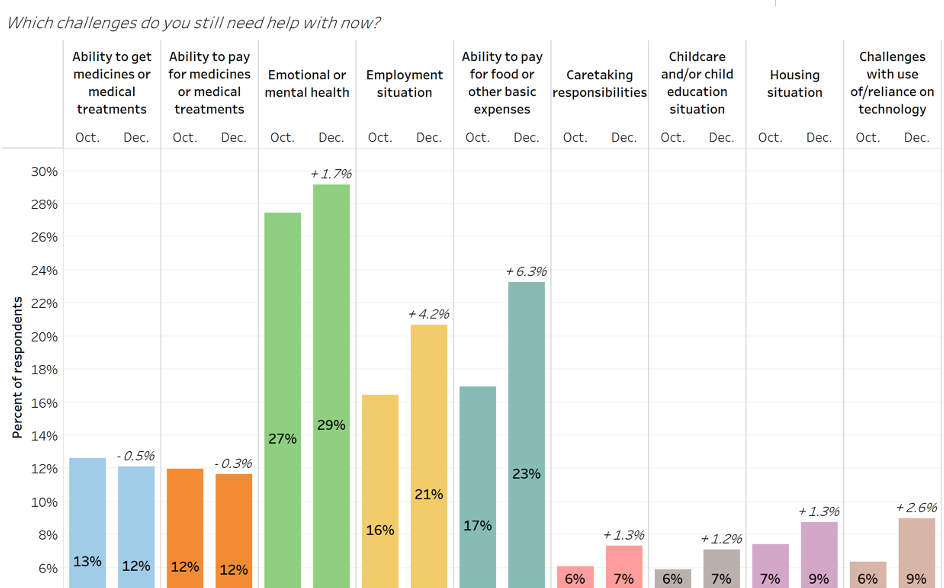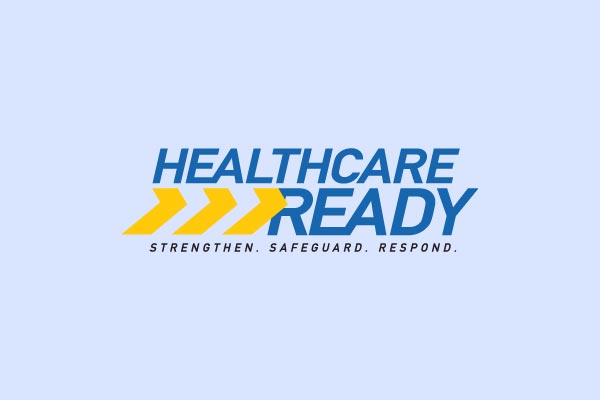One year later: What We Know about COVID-19's Impact on American Communities
Over the past decade, disaster preparedness efforts have focused heavily on improving the preparedness of individual households over communities and networks. The preparedness gap between communities and individuals leaves underserved groups, such as poor communities and communities of color, exposed to greater risks from disaster events and worsens long-standing inequities related to social determinants of health. This has shown to be true during the COVID-19 pandemic – there is widespread reporting and a growing body of evidence that shows that the COVID-19 pandemic has disproportionately impacted underserved communities – especially, communities of color.
Through our partnership with the Walmart Foundation, Healthcare Ready is investigating the impacts of COVID-19 on historically underserved communities. Alongside researchers from the University of Maryland and the University of Southern Alabama we conducted multiple national and state-level web surveys of households, along with phone interviews with leaders in community-based organizations to understand the specific challenges faced by vulnerable communities in this pandemic.
Created in consultation with the polling group YouGov, the surveys asked people across the country how COVID-19 has changed their lives in areas, such as: access and ability to pay for medicines, employment status, mental health, ability to pay for food and basic expenses, and housing security. To date, more than 1,300 adults responded to the October survey, and more than 1,600 in December.
Initial findings from survey responses revealed:
- Half of respondents reported their emotional or mental health situation got worse in October, and even more shared that their emotional and mental health worsened in December (55.0%).
- In both October and December, nearly 1 in 3 respondents reported that their ability to get medicines or medical treatments and their ability to pay for food or other basic expenses got worse due to COVID-19.
- In December, nearly 1 in 5 (19%) respondents reporting having tried to get help with their ability to pay for food – a possible reflection of loss of employment, or the loss of guaranteed employment for low-wage workers.
- Respondents said they anticipated both employment and the ability to pay for food and other basic expenses will continue to be a challenge in the next two years.
See below for the results from the question – What challenges do you still need help with? For October 2020 and December 2020.

The results of the October and December national surveys reveal emotional/mental health, employment situation, and ability to pay for food or basic expenses to be some of the most heavily disrupted areas in their lives during the COVID-19 pandemic. The number of people who pointed to these challenges also increased between October and December, indicating a worsening situations over time.
Also notable is the relation of each of these categories to one another. As one worsens, such as a person’s employment situation, it is likely it will be reflected in the other parts of the person’s life, such as their ability to pay for food, or housing. As household economic situations worsen, they add more and more stress to individuals, which can, among other factors, lead to worsening of emotional or mental health.
While it is no surprise that the COVID-19 pandemic has had a negative effect on many aspects of life, these initial findings show that economic concerns are likely a driving factor to these cascading consequences. This idea of cascading consequences of the pandemic, and the interdependencies of many areas of individuals’ lives that have been impacted, must be considered when determining how to assist communities during response and recovery. If root causes of these complicated issues are not addressed, they will continue to exist and likely worsen and ultimately act as a barrier to equitable community recovery.
Stay tuned as we continue to share more insights from this study to help policy and community leaders understand where vulnerable communities need help most in the start to COVID-19 recovery. In upcoming blog posts and across our site, we’ll share stories from more than 30 interviews conducted with residents in two communities in Texas and Louisiana, which were some of the hardest-hit areas by COVID-19, and share lessons on what it means to orchestrate equitable community recovery from the pandemic.






